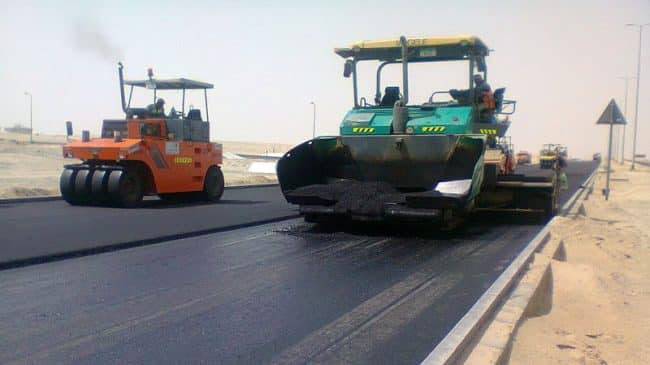The White House is trying to square the circle on its promised $1 trillion infrastructure plan. While still emphasizing the need for private capital investment, the Trump administration can hope for bipartisan support only if the infrastructure plan includes net additions to federal spending, especially for projects not feasible for revenue-based financing. Additionally, conservative Republicans will likely insist that any new federal spending be paid for (rather than further ballooning the deficit).
As I’ve written elsewhere, there is no need for a federal tax credit to induce private investment. With infrastructure funds having raised in excess of $250 billion over the last five years, there is plenty of willingness to invest. The problem is a dearth of U.S. projects.
In a recent piece for Time.com, former George W. Bush-era Department of Transportation policy maven Tyler Duvall and two McKinsey colleagues suggested that the federal government “consider providing incentives to the states to monetize existing assets into new projects,” citing the successful Australian asset recycling policy that I wrote about here last year. And in February, the Australian Embassy issued its own suggested application of their experience to a “Rebuilding American 20/20 Infrastructure Program.”
The aim of such proposals is to incentivize state and local governments to create two kinds of project pipelines. The first would be user-fee-based brownfield asset (airports, highways and bridges, seaports) needing refurbishment, which have proved very attractive to infrastructure investment funds and public pension funds. The second would be both brownfield and greenfield infrastructure that would not pencil out with user-fee financing-such as public buildings, rural roads and bridges, well-justified transit projects, etc.
The Australian Embassy suggests that the federal government create a $100 billion Asset Recycling Fund, capitalized by selling revenue bonds backed by future corporate income tax revenue from the refurbished brownfield assets. To encourage states to lease brownfield assets and invest the proceeds in other infrastructure, the fund would offer states a 20 percent bonus on the value of each lease transaction, provided all the proceeds were used for other infrastructure. (And I will note that if the brownfield project’s existing tax-exempt bonds did not have to be replaced with taxable bonds by the lessee, the proceeds for new infrastructure would be greater.) The infrastructure law could encourage or require the non-revenue projects to be procured via availability-payment public-private partnership (P3) concessions, helping to create the second pipeline of projects for private capital investment.
Here’s an example. There is still no funding plan for the $24 billion Gateway Project to provide new rail tunnels and adjacent infrastructure between New York and New Jersey. Yet the Port Authority of New York & New Jersey owns three sets of not-very-well managed revenue-producing assets: airports, bridges and tunnels, and seaports. In a recent study for the Manhattan Institute, I estimated the likely market value of these assets if they were to be long-term leased under P3 concessions. Using a database of global transactions from the last decade or so, my mid-range asset values were $16.4 billion for the airports, $28.2 billion for the bridges and tunnels, and $3.3 billion for the seaports. Leasing only some of these assets would raise enough to pay for a Gateway Project structured as a long-term availability-payment concession.
Is this approach anywhere within the realm of political feasibility?
For Republicans in Congress, the biggest stumbling block is likely to be the initial $100 billion Asset Recycling Fund. The credibility of those bonds being paid off over time by corporate profits from the leased brownfield assets is questionable. An alternative, assuming a comprehensive tax reform bill is passed prior to the infrastructure program, would be to capitalize the fund using a portion of the one-time receipts from repatriation of overseas corporate income tax revenue, along the lines proposed by Rep. John Delaney (D-MD). Making Rep. Delaney’s idea part of the plan, though in a modified form, could possibly open the door to some degree of bipartisan support in Congress.
Another factor that might help attract bipartisan support (by overcoming potential public employee union attacks on the Asset Recycling plan as “privatization”) would be to include participation by U.S. public employee pension funds. I would not argue for a federal mandate to this effect, but simply point to the high-equity approach employed in recent pension-fund buyouts of the Chicago Skyway and Indiana Toll Road. Since pension funds typically seek only high-single-digit returns on brownfield assets, the user fees can be less than in a purely private deal, since the weighted average cost of capital is lower in such financing structure. And public employee union leaders are coming to terms with a portion of their pension funds’ assets being invested in revenue-producing infrastructure. Union support could bring a critical mass of Democrats on board.
Politicians of both major parties love infrastructure, but Republicans and Democrats differ rather sharply on how to pay for such programs. I see zero chance that House or Senate Republicans would agree to $1 trillion worth of new federal spending on infrastructure, without close to $1 trillion worth of “pay-fors.”
In some recent debates (e.g., over air traffic control corporatization), most congressional Democrats automatically termed the proposal “privatization” and therefore beyond the pale. But think back to September 2014, when a bipartisan panel of the House Transportation & Infrastructure Committee released a report solidly supportive of P3 infrastructure. The kind of asset recycling proposal set forth here has the potential for garnering similar bipartisan support.
President Trump has expressed dismay at the poor condition of the New York airports, while expressing support for the Gateway project. Asset recycling could solve both problems, while providing a model for the rest of the country.
Robert Poole is director of transportation at Reason Foundation. This column first appeared in Public Works Financing.

